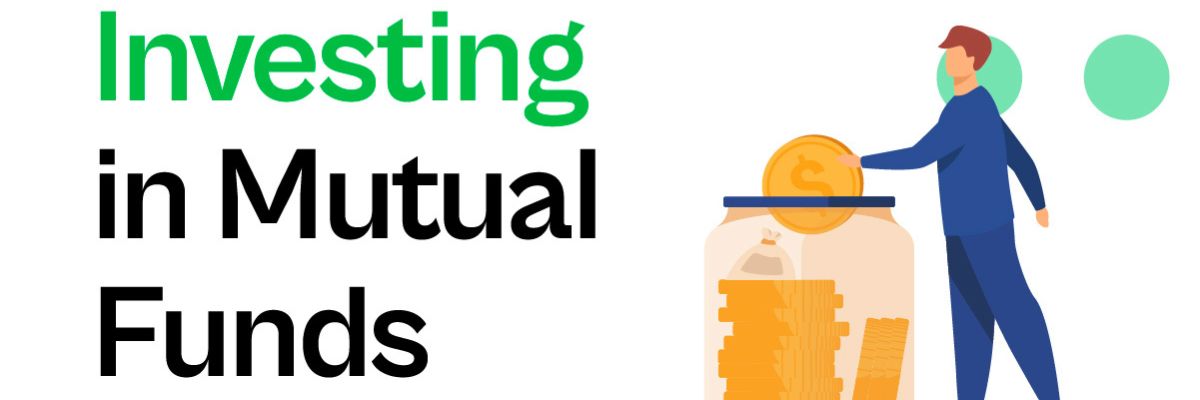Embarking on the exciting journey of mutual funds opens a gateway to a multifaceted financial landscape characterised by both promise and complexity. At its fundamental level, a mutual fund serves as a collective investment vehicle, pooling financial resources from a diverse array of investors to construct a professionally managed, diversified portfolio. While the allure of mutual funds lies in their accessibility and the potential for risk mitigation through diversification, successfully navigating the intricacies of this investment avenue demands a nuanced understanding beyond the surface.
This comprehensive guide serves as a compass for investors, unravelling the multifaceted layers of mutual funds. From the initial steps of choosing the right type of fund to aligning investment strategies with individual financial goals, we traverse the fundamentals with precision. However, the spotlight extends beyond the conventional narrative. In the shadows lie hidden costs, fees, and charges that can significantly impact the overall returns on investment. This guide delves into the often-overlooked realm of hidden financial intricacies, providing a detailed exploration of the potential implications for investors. Join us on this insightful expedition as we decode the complexities of mutual funds, empowering investors to make judicious decisions and ensuring their investments not only grow but thrive amidst the nuanced intricacies of the financial terrain.
It is important to understand what is a mutual fund is before we dive into fees and charges associated with it. A mutual fund serves as a gateway to financial accessibility, pooling resources from diverse investors and strategically investing in a varied portfolio managed by professionals. It provides an entry point for those new to investing, eliminating the need for an in-depth understanding of market complexities. Investors purchase shares, becoming partial owners, sharing both risks and rewards. With various types like equity, debt, and hybrid funds, catering to different goals, mutual funds offer a diversified mix. Their key advantage lies in risk reduction through broad security investment, ideal for those seeking a balanced portfolio without intensive research. As we delve further, understanding the fund's structure sets the stage for exploring hidden costs and fees in subsequent sections.
Investing in mutual funds is a strategic endeavour that involves careful consideration of individual financial goals, risk tolerance, and the broader investment landscape. Here's a step-by-step guide on how to invest in mutual funds, ensuring a well-informed and calculated approach.

Before diving into the world of mutual funds, it's crucial to articulate your financial objectives. Whether it's wealth accumulation, retirement planning, or saving for a specific milestone, clarifying your goals will guide the selection of the most suitable mutual fund types.
Mutual funds come in various risk profiles, from conservative debt funds to more aggressive equity funds. Assess your risk tolerance by considering factors such as your investment time horizon, financial capacity to withstand market fluctuations, and personal comfort with risk.
Mutual funds offer a diverse array of options, each catering to specific investment strategies. Conduct thorough research on the different types of funds available, considering their historical performance, fund manager expertise, and expense ratios. Look for funds that align with your financial goals and risk appetite.
Building a diversified portfolio is a cornerstone of successful investing. Consider spreading your investments across different asset classes and sectors to minimise risk. Many mutual funds, such as hybrid funds, inherently provide diversification, offering a balanced mix of equities and fixed-income securities.
Once you've identified the mutual funds that align with your financial goals, it's time to open an investment account. This can be done through various financial institutions, including banks, online brokerages, or directly through mutual fund companies.
While the expense ratio and loads are prominent figures in the cost structure of mutual funds, a deeper exploration reveals the existence of hidden costs—elusive adversaries that can silently chip away at investment returns. Understanding and identifying these covert expenses is crucial for investors seeking to maximise the growth of their portfolios. Let's shine a light on the hidden costs of mutual funds and explore their potential impact.
Beneath the surface of mutual fund transactions lie hidden transaction costs, often overlooked by investors. These costs arise from the buying and selling of securities within the fund's portfolio. Frequent trading can lead to higher transaction costs, impacting the fund's overall performance. Investors should examine a fund's turnover ratio, a key indicator of the level of trading activity.
Soft dollars refer to the benefits received by a mutual fund manager in exchange for using the services of a particular brokerage or financial institution. While these arrangements may facilitate cost savings for the fund, they can introduce conflicts of interest. Investors should be aware of soft dollar arrangements and assess their potential impact on the fund's decision-making process.
The act of buying or selling large quantities of securities can influence market prices, leading to market impact costs. These costs arise when the fund's transactions affect the prevailing market prices of the securities being traded. Investors should consider the fund's trading strategy and its potential impact on market prices, as market impact costs can subtly reduce returns.
Hidden costs can also manifest in the form of tax implications. Mutual fund distributions may trigger capital gains taxes for investors, even if they haven't sold their shares. Understanding the tax consequences of mutual fund investments is vital, as unexpected tax liabilities can diminish overall returns.
Frequent buying and selling of securities within a mutual fund's portfolio, known as portfolio turnover, can lead to hidden costs. Higher turnover typically results in increased transaction costs and may trigger capital gains taxes. Investors should assess a fund's historical turnover to gauge its potential impact on hidden costs.
Scrutinising a fund's prospectus, understanding its trading strategies, and considering the potential tax implications are essential steps in uncovering these concealed expenses.
Mutual funds, while popular for their simplicity and accessibility, often harbour hidden charges that can subtly impact an investor's bottom line. Navigating the realm of mutual fund hidden charges requires a keen eye for detail and a commitment to financial transparency. Let's unravel the intricacies of these concealed fees and charges, shedding light on the often-overlooked aspects that can influence the overall cost of mutual fund ownership.

Hidden charges can manifest in the form of sales charges or loads, impacting the initial investment or the proceeds from selling fund shares. Front-end loads, deducted when purchasing shares, and back-end loads, incurred upon selling, can significantly affect the total cost of investing. Investors should be vigilant about load structures and consider no-load or low-load fund options.
Some mutual funds impose account maintenance fees to cover administrative costs. While not universal, these fees can quietly diminish returns over time. Investors should carefully review the fund's documentation to identify any potential account maintenance charges and assess their impact on the overall cost of ownership.
Mutual funds may implement redemption fees as a deterrent to short-term trading. These fees are incurred when selling fund shares within a specified holding period. While designed to discourage rapid turnover, investors should be aware of the existence and implications of redemption fees, particularly if they align with their investment horizon.
For investors engaged in fund exchanges within the same fund family, exchange fees may apply. These fees, while not always explicit, can contribute to the hidden costs associated with managing a diversified portfolio through fund exchanges. Investors should consider the impact of exchange fees on their overall investment strategy.
Often categorised as marketing and distribution fees, 12b-1 fees can be hidden within a fund's expense structure. These fees, although seemingly modest, contribute to the fund's overall operating expenses and may impact the investor's returns over time. Investors should scrutinise the prospectus to identify the presence and extent of 12b-1 fees.
By bringing these hidden charges to the forefront, investors can make more informed decisions, ensuring a clearer understanding of the true cost of mutual fund ownership.
Navigating the intricate landscape of mutual funds requires more than a surface-level understanding of investments; it demands a discerning approach to the often-overlooked aspects of fees, costs, and charges. We've embarked on a journey through the fundamental concepts of mutual funds, exploring how to invest in mutual funds wisely while shedding light on hidden costs that can silently erode returns. Identifying and understanding these charges is the first step towards making informed decisions that align with financial goals. Armed with knowledge about expense ratios, loads, transaction costs, and hidden fees in mutual funds, investors can strategize effectively to minimise costs and maximise returns.

Whether opting for low-cost funds, embracing no-load options, or considering ETFs, the strategic choices available empower investors to take control of their financial destiny. As we conclude this exploration, the key takeaway is clear: a diligent and informed approach to mutual fund investments not only unlocks the potential for financial growth but also safeguards against the subtle erosion of hidden costs, ensuring a more transparent and prosperous journey in the world of mutual funds.

By Triston Martin/Feb 02, 2024

By Sean William/May 28, 2024

By Triston Martin/Feb 04, 2024

By Susan Kelly/Mar 13, 2024

By Triston Martin/May 10, 2024

By Triston Martin/Feb 08, 2024

By Verna Wesley/Nov 13, 2024
By Celia Kreitner/Dec 24, 2024

By Sean William/May 29, 2024

By Susan Kelly/Mar 06, 2024

By Sean William/May 31, 2024

By Sean William/May 29, 2024